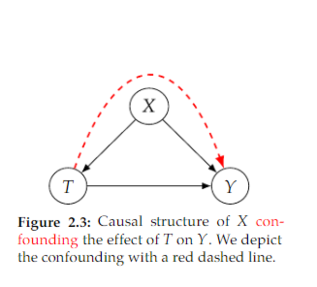Edited, memorised or added to reading queue
on 15-Apr-2022 (Fri)
Do you want BuboFlash to help you learning these things? Click here to log in or create user.
| status | not read | reprioritisations | ||
|---|---|---|---|---|
| last reprioritisation on | suggested re-reading day | |||
| started reading on | finished reading on |
| status | not read | reprioritisations | ||
|---|---|---|---|---|
| last reprioritisation on | suggested re-reading day | |||
| started reading on | finished reading on |
| status | not read | reprioritisations | ||
|---|---|---|---|---|
| last reprioritisation on | suggested re-reading day | |||
| started reading on | finished reading on |
Flashcard 7070797663500
| status | not learned | measured difficulty | 37% [default] | last interval [days] | |||
|---|---|---|---|---|---|---|---|
| repetition number in this series | 0 | memorised on | scheduled repetition | ||||
| scheduled repetition interval | last repetition or drill |
Parent (intermediate) annotation
Open itan> The idea is that although the treatment and potential outcomes may be unconditionally associated (due to confounding), within levels of 𝑋 , they are not associated. In other words, there is <span>no confounding within levels of 𝑋 because controlling for 𝑋 has made the treatment groups comparable. <span>
Original toplevel document (pdf)
cannot see any pdfs| status | not read | reprioritisations | ||
|---|---|---|---|---|
| last reprioritisation on | suggested re-reading day | |||
| started reading on | finished reading on |
Flashcard 7070801071372
| status | not learned | measured difficulty | 37% [default] | last interval [days] | |||
|---|---|---|---|---|---|---|---|
| repetition number in this series | 0 | memorised on | scheduled repetition | ||||
| scheduled repetition interval | last repetition or drill |
Parent (intermediate) annotation
Open itWe do not have exchangeability in the data because 𝑋 is a common cause of 𝑇 and 𝑌 . We illustrate this in Figure 2.3. Because 𝑋 is a common cause of 𝑇 and 𝑌 , there is non-causal association between 𝑇 and 𝑌 . This no
Original toplevel document (pdf)
cannot see any pdfsFlashcard 7070802906380
| status | not learned | measured difficulty | 37% [default] | last interval [days] | |||
|---|---|---|---|---|---|---|---|
| repetition number in this series | 0 | memorised on | scheduled repetition | ||||
| scheduled repetition interval | last repetition or drill |
Parent (intermediate) annotation
Open itThe ignorability assumption is used in Equation 2.3. We will talk more about Equation 2.4 when we get to Section 2.3.5. Another perspective on this assumption is that of exchangeability.
Original toplevel document (pdf)
cannot see any pdfsFlashcard 7070805527820
| status | not learned | measured difficulty | 37% [default] | last interval [days] | |||
|---|---|---|---|---|---|---|---|
| repetition number in this series | 0 | memorised on | scheduled repetition | ||||
| scheduled repetition interval | last repetition or drill |
Parent (intermediate) annotation
Open itExchangeability means that the treatment groups are exchangeable in the sense that if they were swapped, the new treatment group would observe the same outcomes as the old treatment group, and the new control group would observe the same outcomes as the old control group.
Original toplevel document (pdf)
cannot see any pdfsFlashcard 7070807362828
| status | not learned | measured difficulty | 37% [default] | last interval [days] | |||
|---|---|---|---|---|---|---|---|
| repetition number in this series | 0 | memorised on | scheduled repetition | ||||
| scheduled repetition interval | last repetition or drill |
Parent (intermediate) annotation
Open itWe get the average treatment effect (ATE) 4 by taking an average over the ITEs: 𝜏 , 𝔼[𝑌 𝑖 (1) − 𝑌 𝑖 (0)] = 𝔼[𝑌(1) − 𝑌(0)] , (2.2) where the average is over the individuals 𝑖 if 𝑌 𝑖 (𝑡) is deterministic. If 𝑌 𝑖 (𝑡) is random, the average is also over any other ran
Original toplevel document (pdf)
cannot see any pdfsFlashcard 7070812343564
| status | not learned | measured difficulty | 37% [default] | last interval [days] | |||
|---|---|---|---|---|---|---|---|
| repetition number in this series | 0 | memorised on | scheduled repetition | ||||
| scheduled repetition interval | last repetition or drill |
Parent (intermediate) annotation
Open itIdentifibility
Original toplevel document (pdf)
cannot see any pdfsFlashcard 7070814178572
| status | not learned | measured difficulty | 37% [default] | last interval [days] | |||
|---|---|---|---|---|---|---|---|
| repetition number in this series | 0 | memorised on | scheduled repetition | ||||
| scheduled repetition interval | last repetition or drill |
Parent (intermediate) annotation
Open itspan> there is no reason to expect that the groups are the same in all relevant variables other than the treatment. However, if we control for relevant variables by conditioning, then maybe the <span>subgroups will be exchangeable. We will clarify what the “relevant variables” are in Chapter 3, <span>

